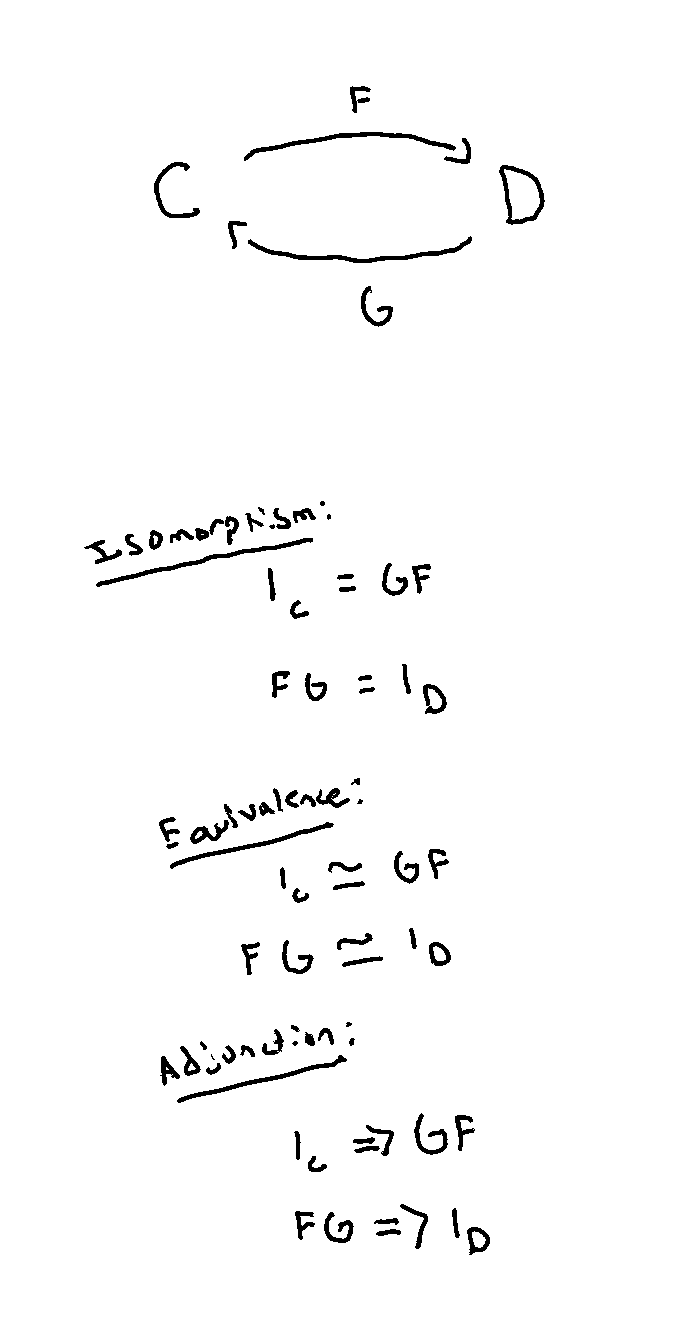Contrasting isomorphisms, equivalencies, and adjunctions
01 Jan 2020 ⇐ Notes archive(This is an entry in my technical notebook. There will likely be typos, mistakes, or wider logical leaps — the intent here is to “let others look over my shoulder while I figure things out.”)
When I was first introduced to adjunctions, I reacted in the way Spivak anticipated during an applied category theory lecture (timestamped, transcribed below).
…and when people see this definition [of an adjunction], they think “well, that seems…fine. I’m glad you told me about…that.”
And it wasn’t until I stumbled upon a Catsters lecture from 2007 (!) where Eugenia Cheng clarified the intent behind the definition (and contrasted it to isomorphisms and equivalencies).
To start, assume we have two categories C and D with functors, F and G between them (F moving from C to D and G in the other direction).
There are a few possible scenarios we could find ourselves in.
- Taking the round trip—i.e.
GFandFG—is equal to the identity functors onCandD(denoted with1_Cand1_Dbelow). - The round trip is isomorphic to each identity functor.
- Or, the round trip lands us a morphism away from where we started.

Moving between the scenarios, there’s a sort of “relaxing” of strictness:
- The round trip is the identity functor.
- […] an isomorphism away from the identity functor.
- […] a hop away from identity functor.